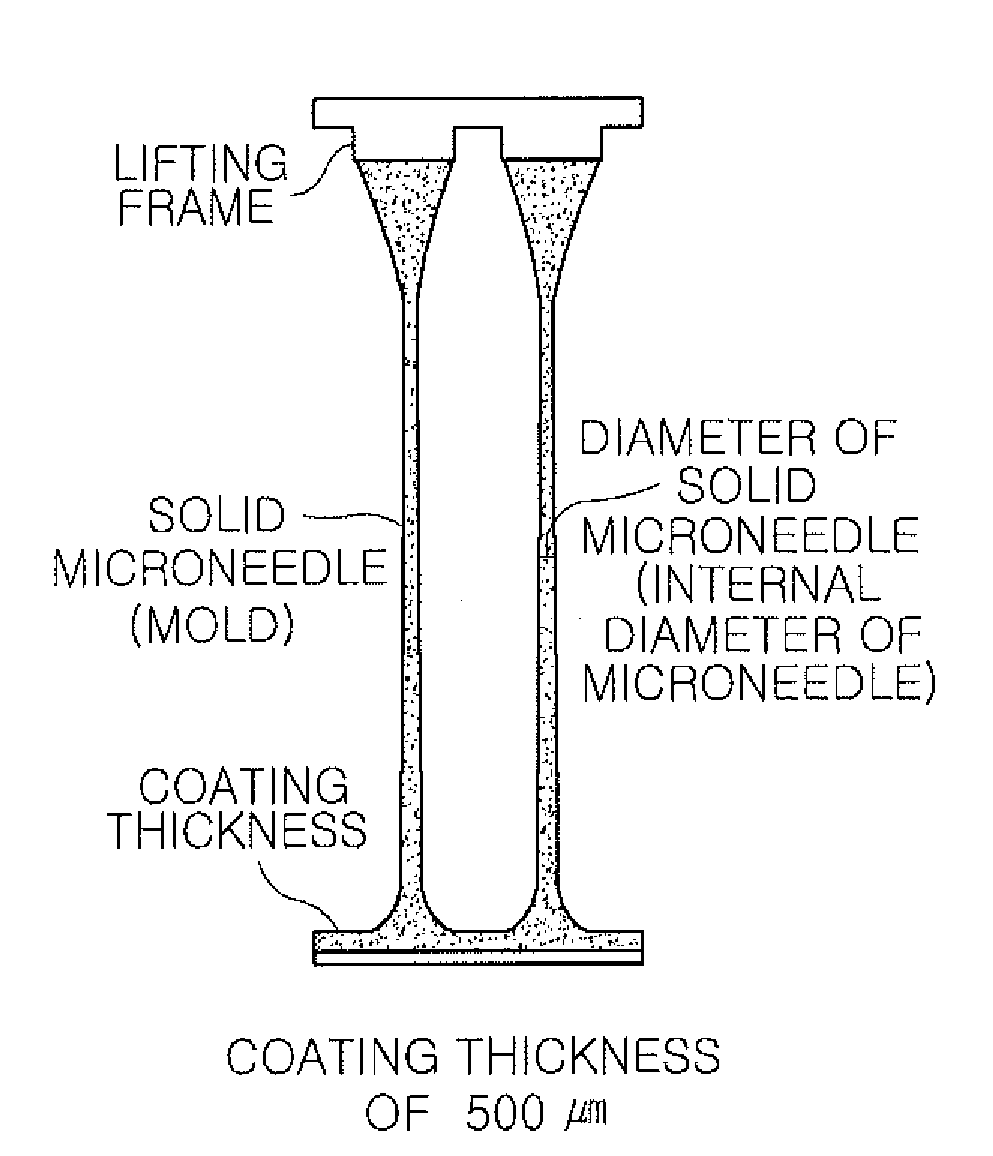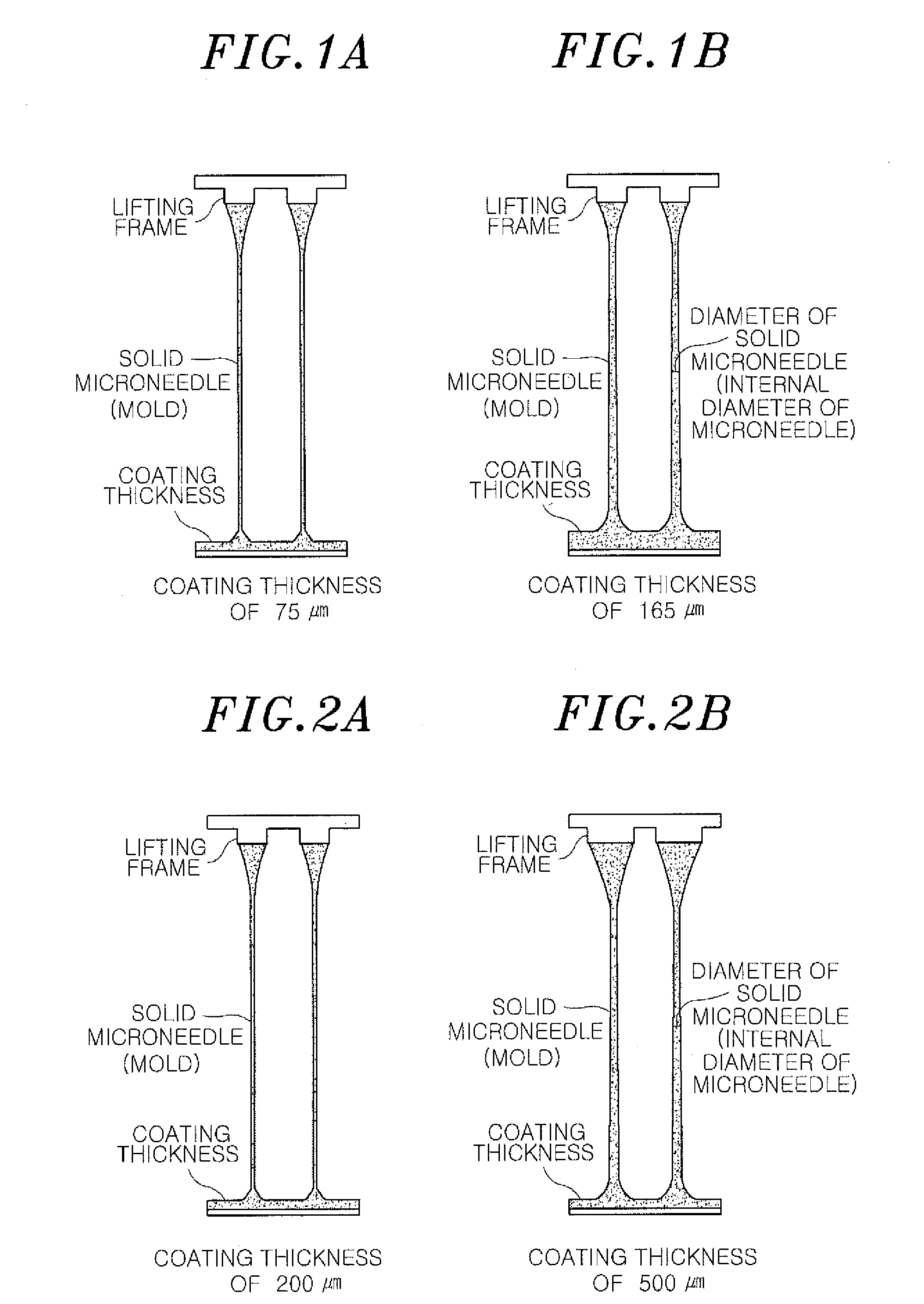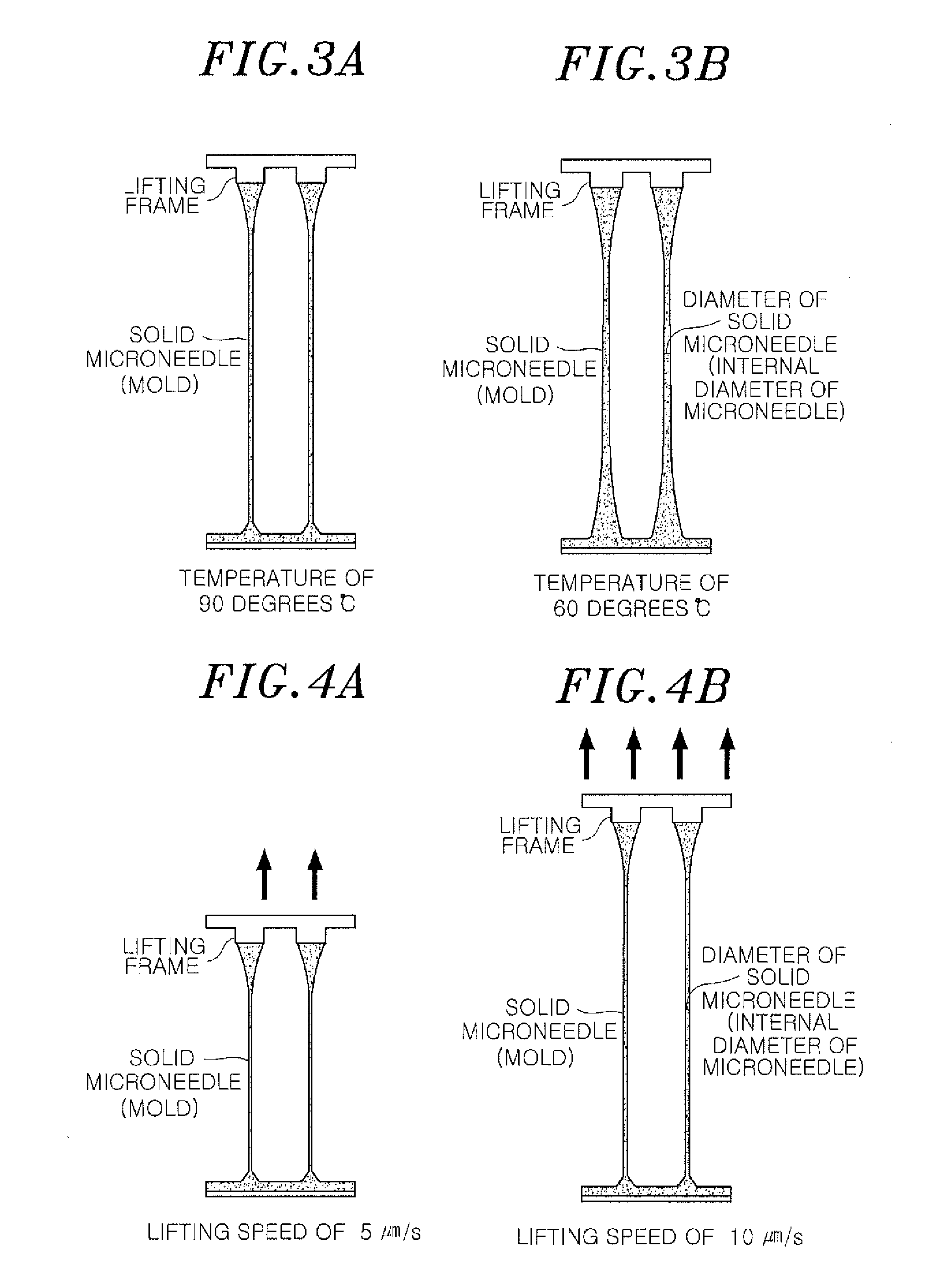Hollow microneedle having a variable appearance
a manufacturing method and microneedle technology, applied in the field of variable appearance of hollow microneedles, can solve the problems of limited medical application of hollow microneedles compared to existing hypodermic needles, difficulty in adjusting the diameter and length of hollow microneedles, etc., and achieves the effect of simple and quick manufacturing and low manufacturing cos
- Summary
- Abstract
- Description
- Claims
- Application Information
AI Technical Summary
Benefits of technology
Problems solved by technology
Method used
Image
Examples
embodiment 1
Varying an External Appearance of a Microneedle by Adjusting a Coating Thickness of a Polymer Solution
[0096]A solid microstructure is formed of an epoxy polymer “SU-8 2050 photoresist (microchem)” that is a polymer having viscosity of 14,000 cSt. SU-8 2050 is respectively coated on a metal or silicon substrate to a thickness of 75 μm and 165 μm, and then maintained at a temperature of 120° C. for 5 minutes, thereby enabling the flux of SU-8 2050 to be maintained. Subsequently, the SU-8 2050 is contacted to a 3×3 patterned frame having a diameter of 200 μm. While slowly lowering a temperature of the substrate to 70° C. to 60° C., the coated SU-8 2050 has viscosity enabling lifting. At this point, by lifting a lifting frame for 5 minutes at a speed of 10 μm / s, as illustrated in FIGS. 1A and 1B, an initial solid structure having a length of 3,000 μm is formed. By increasing a second lifting speed or cutting, the initial solid structure may be spaced apart from the lifting frame.
[0097]A...
embodiment 2
Varying an External Appearance of a Microneedle by Adjusting a Diameter of a Lifting Frame
[0099]A solid microstructure is formed of an epoxy polymer “SU-8 2050 photoresist” that is a polymer having viscosity of 14,000 cSt. SU-8 2050 is coated on a metal or silicon substrate to a thickness of 75 μm, and then maintained at a temperature of 120° C. for 5 minutes, thereby enabling the flux of the SU-8 2050 to be maintained. Subsequently, the SU-8 2050 is contacted to a 3×3 patterned frame having a diameter of 200 μm and a 3×3 patterned frame having a diameter of 500 μm, respectively. While slowly lowering a temperature of the substrate to 70° C. to 60° C., the coated SU-8 2050 has viscosity enabling lifting.
[0100]At this point, by lifting a lifting frame for 5 minutes at a speed of 10 μm / s, as illustrated in FIGS. 2A and 2B, an initial solid structure having a length of 3,000 μm is formed. By increasing a second lifting speed or cutting, the initial solid structure is spaced apart from ...
embodiment 3
Varying an External Appearance of a Microneedle by Adjusting a Temperature
[0102]A solid microstructure is formed of an epoxy polymer “SU-8 2050 photoresist” that is a polymer having viscosity of 14,000 cSt. SU-8 2050 is coated on a metal or silicon substrate to a thickness of 75 μm, and then maintained at a temperature of 120° C. for 5 minutes, thereby enabling the flux of the SU-8 2050 to be maintained. Subsequently, the SU-8 2050 is contacted to a 3×3 patterned frame having a diameter of 200 μm. While slowly lowering a temperature of the substrate to 90° C. (adhesive strength of polymer: 1N, viscosity: 100 Poise) and 60° C. (adhesive strength of polymer: 2N, viscosity: 6,500 Poise), by lifting a lifting frame for 5 minutes at a speed of 10 μm / s, as illustrated in FIGS. 3A and 3B, an initial solid structure having a length of 3,000 μm is formed. By increasing a second lifting speed or cutting, the initial solid structure is spaced apart from the lifting frame. As a result, at an in...
PUM
| Property | Measurement | Unit |
|---|---|---|
| Length | aaaaa | aaaaa |
| Length | aaaaa | aaaaa |
| Angle | aaaaa | aaaaa |
Abstract
Description
Claims
Application Information
 Login to View More
Login to View More - R&D
- Intellectual Property
- Life Sciences
- Materials
- Tech Scout
- Unparalleled Data Quality
- Higher Quality Content
- 60% Fewer Hallucinations
Browse by: Latest US Patents, China's latest patents, Technical Efficacy Thesaurus, Application Domain, Technology Topic, Popular Technical Reports.
© 2025 PatSnap. All rights reserved.Legal|Privacy policy|Modern Slavery Act Transparency Statement|Sitemap|About US| Contact US: help@patsnap.com



